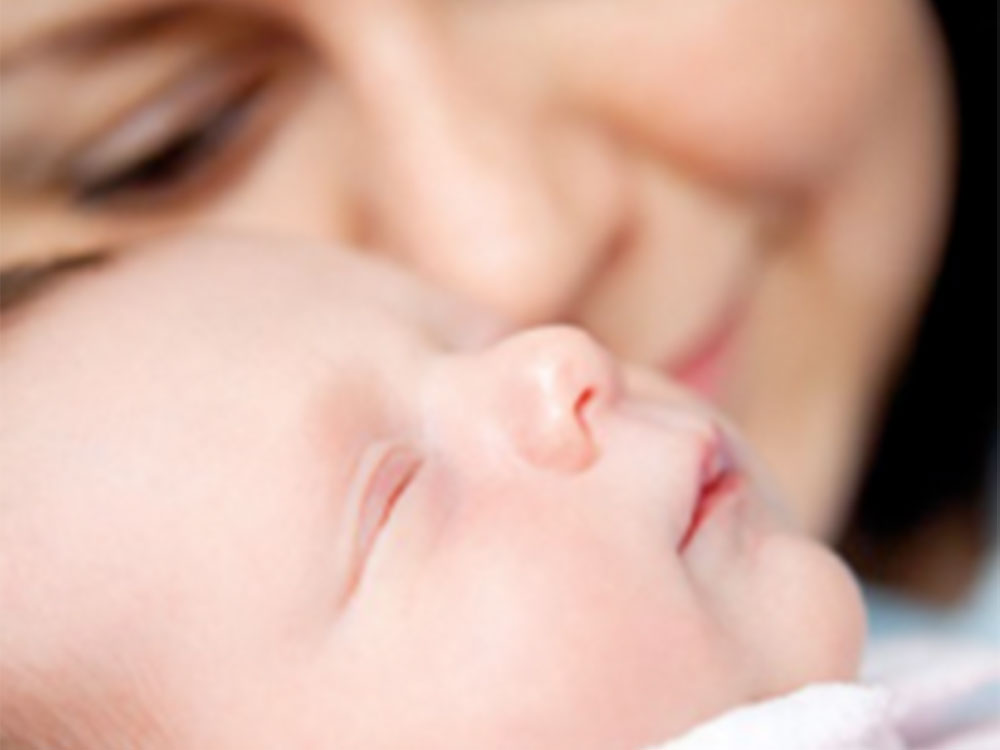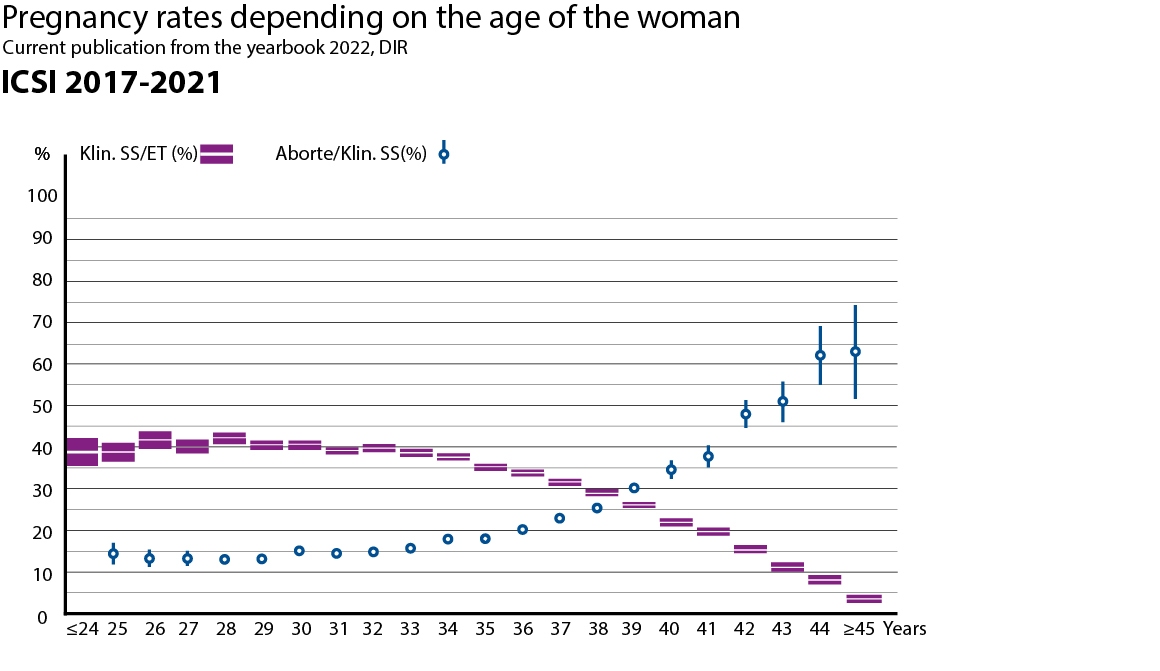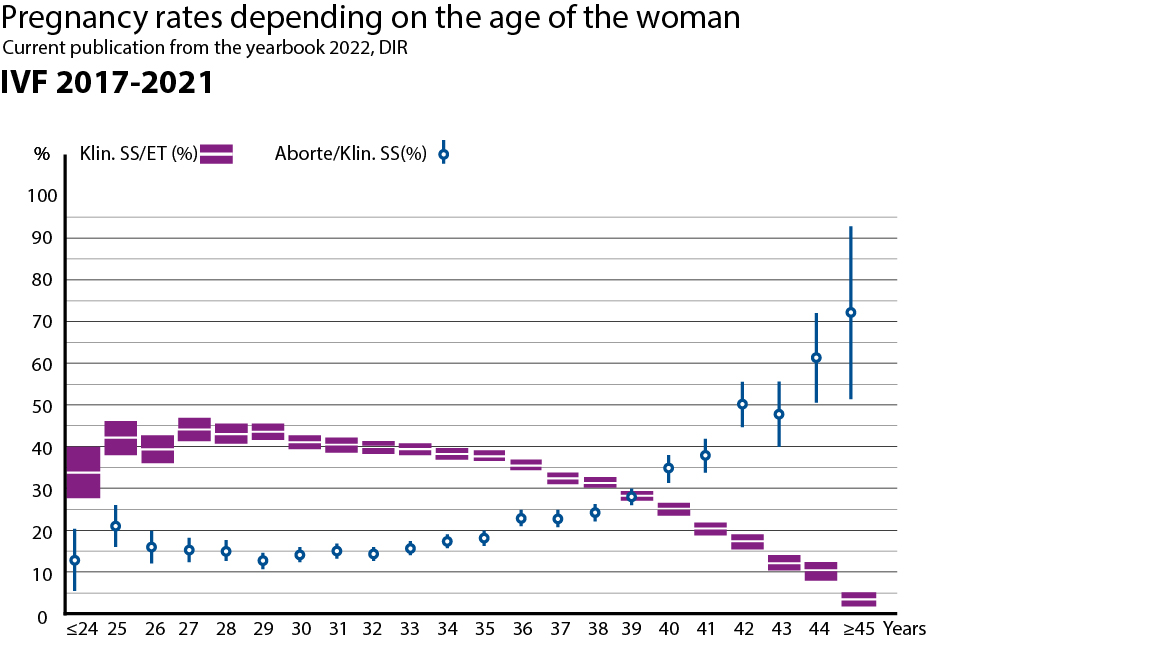Treatment success
In Germany, every 7th – 10th partnership is involuntarily childless. And 1/3 of all couples experience a min. 12-month episode of childlessness. At the same time, the probability of pregnancy per cycle without treatment is 40% in a healthy young couple in their 20s. However, the age of the woman plays a major role in the success rate and thus the probability of pregnancy per cycle decreases to 15-20% at the age of 30-35.
The chance of success of ART treatment also varies greatly from individual to individual and depends on age and pre-existing conditions. Compare this with the presentation from the German IVF registry. In IVF or IVF/ICSI treatment, the success rate increases as the number of transfers increases. Statistically, about 65% of couples have a child after 6 cycles.
Clinical pregnancies per transfer. But the crucial point is the likelihood of success in the birth of a child. Thus, not only the probability of pregnancy but also the prognosis of its further course up to birth must be taken into account. Only the birth of your child is the desired treatment success for you and for us.
Very high birth rates are sometimes possible with ideal subpopulations of patients. However, taking the outcome figures of all patient couples over a larger period of time together, a top performing IVF center with very good outcome quality anywhere in the world will at best achieve a birth rate per cycle started that is equivalent to what is possible in nature in couples with good health and fertility, namely around 20%. Most IVF centers fall far short of these possibilities with their outcome numbers.
No IVF center in the world can outperform nature: More than 50% of eggs in women as young as 35 years old have chromosomal maldistributions, i.e. will perish after fertilization, cf. polar body diagnostics. In addition, there are losses due to fertilization of healthy oocytes with chromosomally defective sperm and losses due to chromosomal maldistribution in the further development of early embryos. Few pronuclear stages have the potential to become a blastocyst (embryo 5 days after fertilization), even fewer have the potential to become a child.
On statistical average, out of fifteen pronuclear stages, only three have the potential of developing into a blastocyst. In turn, out of three blastocysts, only one has, on statistical average, the potency to become permanent human life, a child.



